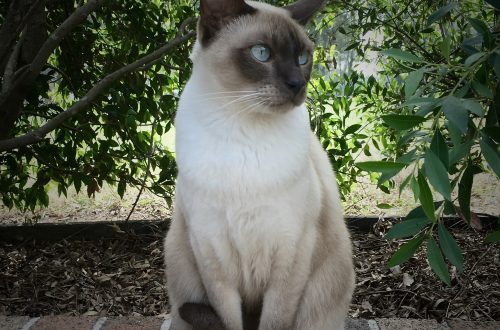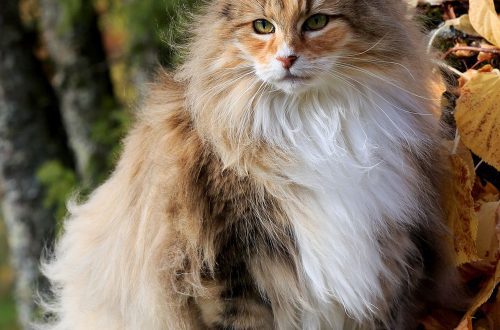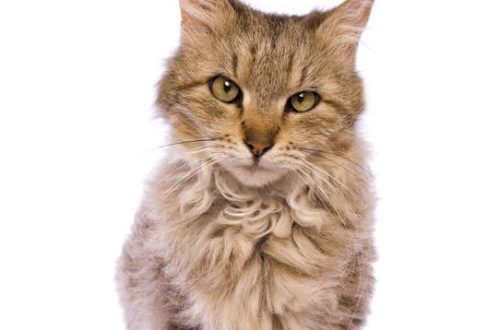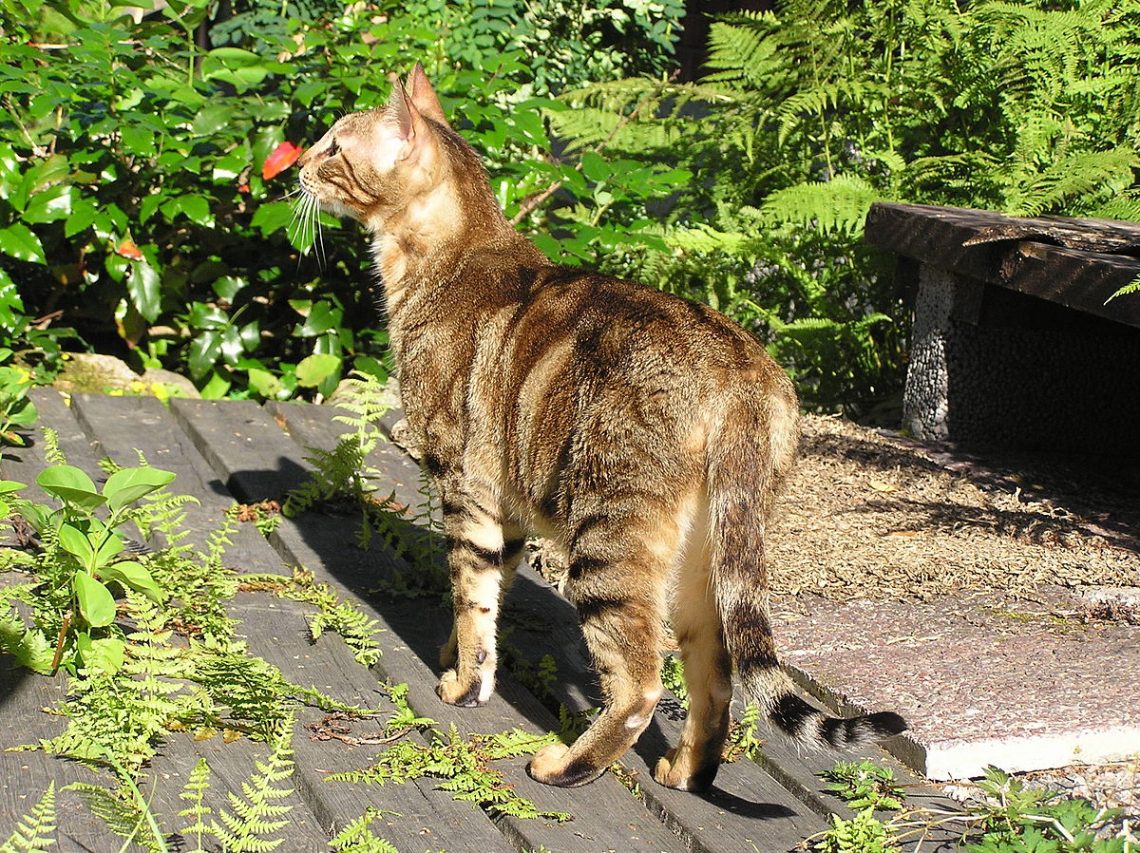
Sokoke
Other names: soukok , Kenyan forest cat , hazonzo
The Sokoke is an ancient cat breed native to Kenya. Tender and amorous, but very freedom-loving.
Contents
Characteristics of Sokoke
| Country of origin | Denmark, Kenya |
| Wool type | Shorthair |
| Height | up to 30 cm |
| Weight | 3-5 kg |
| Age | 9-15 years old |
Brief information
- Independent, intelligent, active and very sociable cats;
- Sokoke is the name of the reserve in Kenya, where representatives of this breed were first found;
- Other breed names are Soukok, African Shorthair, Kenyan Forest Cat.
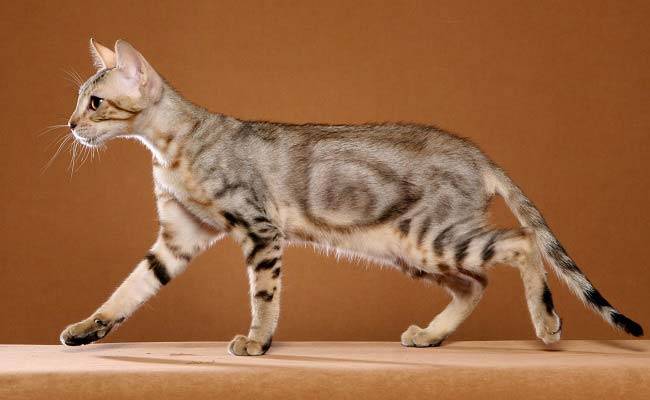
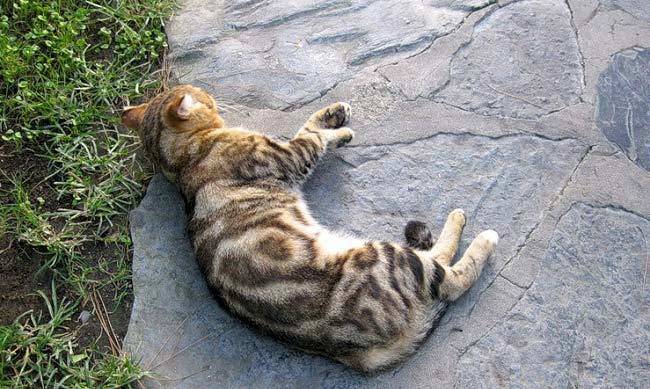
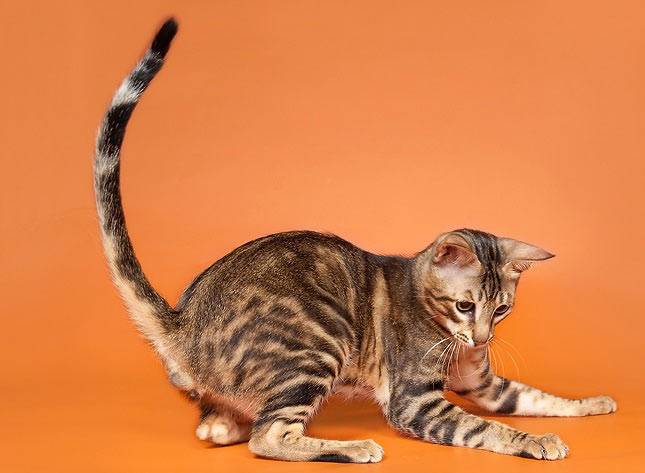
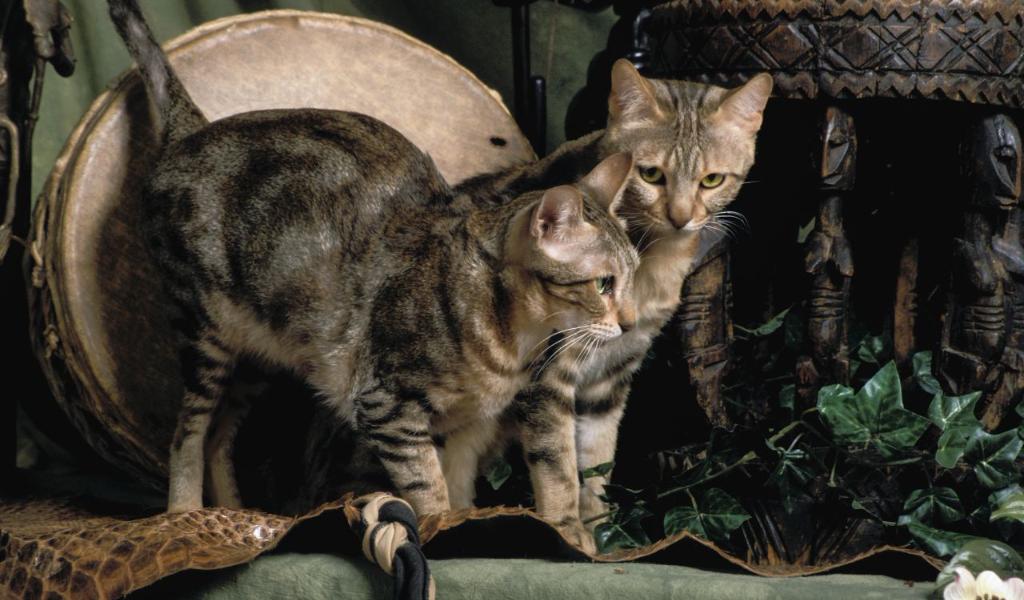
Sokoke is an active, playful and independent cat from Kenya, which delights with its wild primeval beauty and predatory grace. Outwardly, the breed resembles a very small cheetah. The main feature of the sokoke is an unusual color, reminiscent of a woody pattern, which varies from beige to black. Any hair on the skin has light and dark stripes, it looks like one color is “powdered” by another.
Story
Sokoke cats are as similar as possible to their wild counterparts. We can say that this is a cheetah in miniature.
Such cats lived for many years in the forests of Kenya (mainly in the Sokoke region). These wild animals were called hadzonzo. Usually they lived in trees, feeding on insects and birds, which they chased, jumping from branch to branch.
In the 80s. of the last century, the Englishwoman Janie Slater, while in Kenya, at first simply sheltered two Hadzonzo cats, and then organized a nursery for their breeding, giving the cats a name after the name of the province where they come from. Janie Slater’s friend was a cat carrier in Denmark.
In 1983, this breed was given the official name African Shorthair. And sokoke was recognized only ten years later, first in Denmark, and then in other European countries.
Sokoke is practically not found in Russia. Most likely, you will have to buy a kitten in one of the European countries.
Appearance
- Color: marbled tabby, coat color can be any.
- Ears: Large, set high, preferably with tassels at the ends.
- Eyes: expressive and large, able to change color depending on the mood of the cat (from amber to light green).
- Coat: short and shiny, hairs lying close to the body, undercoat not developed.
Behavioral features
By nature, the sokoke is an active, playful and independent animal. These cats can easily adapt to life both in a private house and in an apartment. But it should be remembered that their ancestors are still accustomed to the freedom of the Kenyan forests, so if the sokoke lives in an apartment, then you need to take care of having a plot with trees near the house where the cat can climb and jump on the branches for fun. The Kenyan forest cat will not be able to adapt to the stone jungle of the metropolis.
Sokoke is not only an excellent tree climber, but also an excellent swimmer. She perceives water as an additional entertainment.
The Kenyan Forest cat gets along easily with other animals in the house. She knows how to find a common language with both cats and dogs. Sokoke quickly become attached to the owners. By nature, they are very gentle and amorous, despite their wild appearance.
Sokoke Health and care
The sokoke has a short, shiny coat that lies close to the body. In order for it to maintain a healthy shine all the time, it must be regularly carefully combed. It is recommended to carry out this procedure at least once a week. It is advisable to choose a brush made of natural bristles so that coarse artificial fibers do not damage the cat’s skin. To add shine to wool, rubbing it with a piece of suede, fur or silk will help.
Otherwise, you can adhere to standard care – regularly brush your teeth, ears, lacrimal ducts, bathe once a month using a special shampoo. Since the Sokoke love water, bathing for them is not a painful procedure, but a pleasure.
Kenyan forest cats are naturally healthy. But they also have the standard sores of cats spending time outside – cuts on the paw pads, infections, viruses, parasites, etc. In addition, representatives of this breed are prone to nervous disorders. Sokoke are easily excitable, and also prone to hysteria and neurosis; cats of this breed also have meningitis and convulsions. Most often, nervous disorders are hereditary diseases. Therefore, when buying a kitten, it is important to carefully look at his mother.
Conditions of detention
Sokoke owe their origin to African wild cats, which is why representatives of the breed do not tolerate cold. In winter, it is desirable to insulate the pet’s house and provide a comfortable temperature for him.
Cats of this breed love space, need the opportunity to splash out energy and adore all kinds of multi-tiered houses. Some breeders equip entire complexes for the entertainment of pets.
In summer, sokoke can live in a private house. They will be happy if the owner provides them with constant access to the street. But we must not forget that the cold season does not suit this cat, so they should winter in warmth.
When selecting food for representatives of the African Shorthair, contact your veterinarian or breeder. The specialist will be able to recommend high-quality food that is right for your pet.
Sokoke – Video



